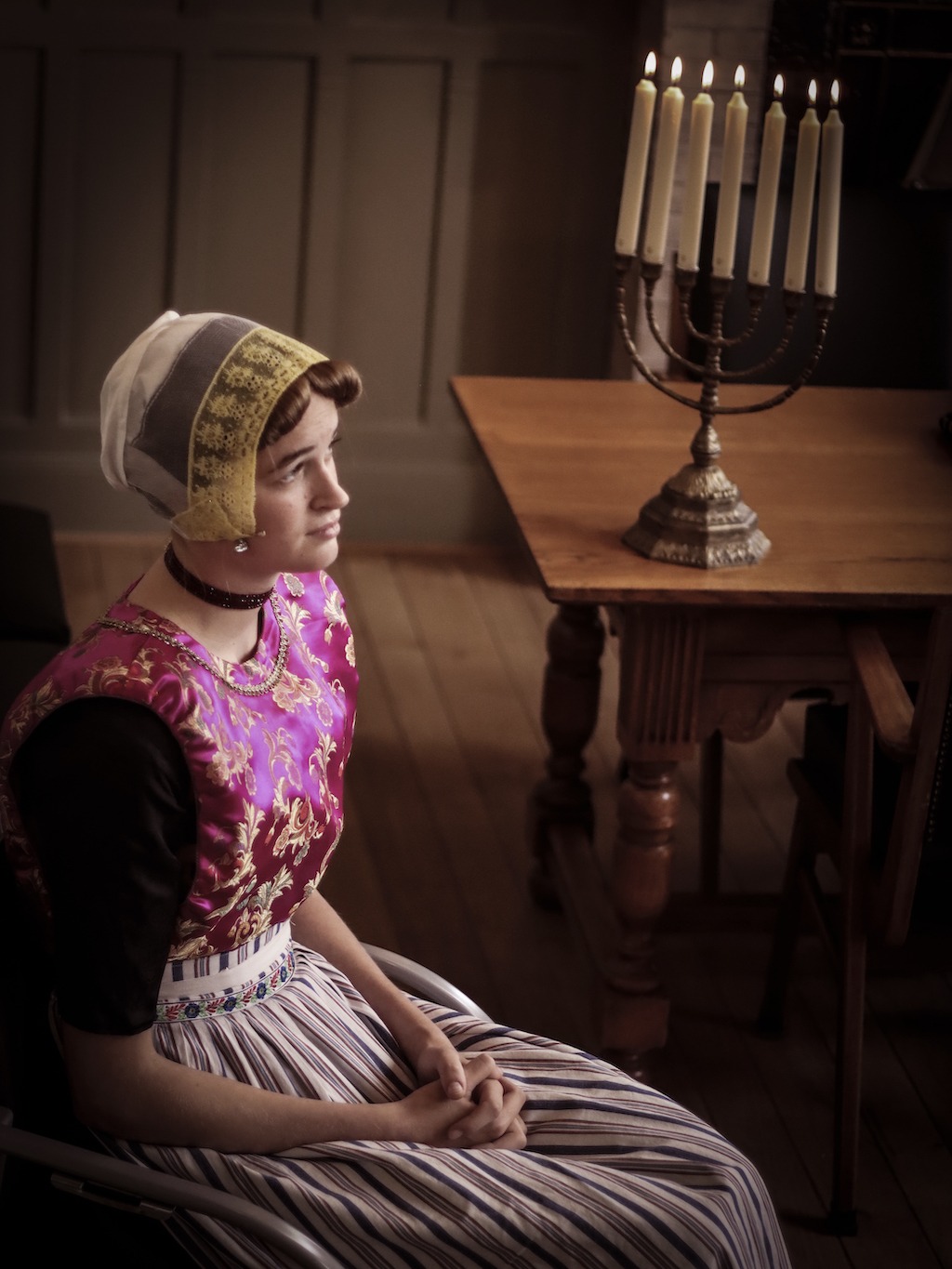
3. Working in Jewish Amsterdam
Between the two World Wars, 60-80 Urk girls worked in Jewish Amsterdam every year. When well-to-do Jewish refugees from Germany arrive in the 1930s, they also go to work with them.
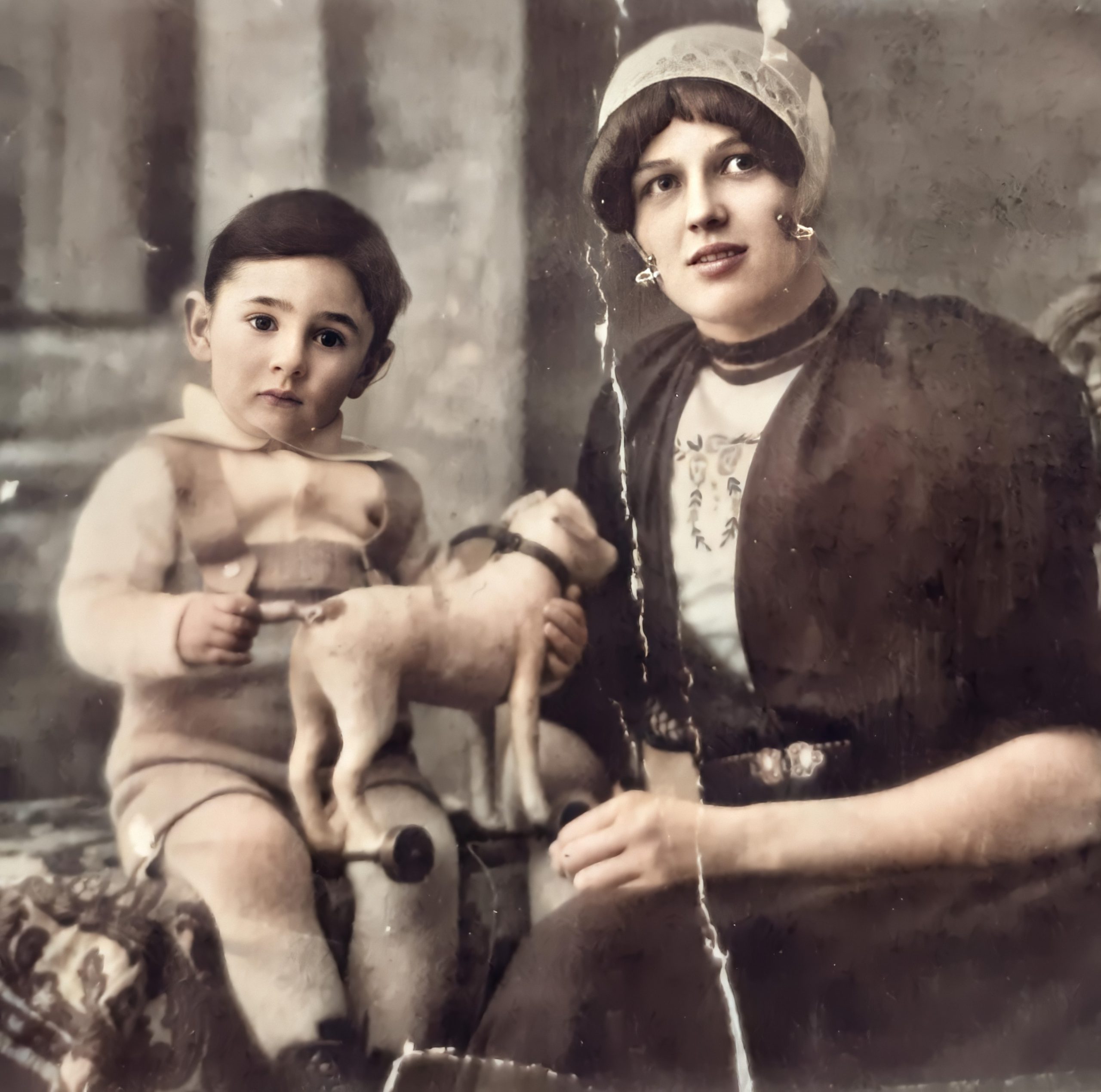
Lummetje Bos with Aron Schiffmann circa 1927 (Vrienden van Urk)
Working in the Jewish neighbourhood has advantages: the girls live within walking distance of each other. Saturday is Sabbath and they help light the stove and lights. On Sundays, they are free to go to church and out and about. On the Ruijterkade, Urker botters are moored at weekends; here the girls are welcome to have a chat or eat fish.
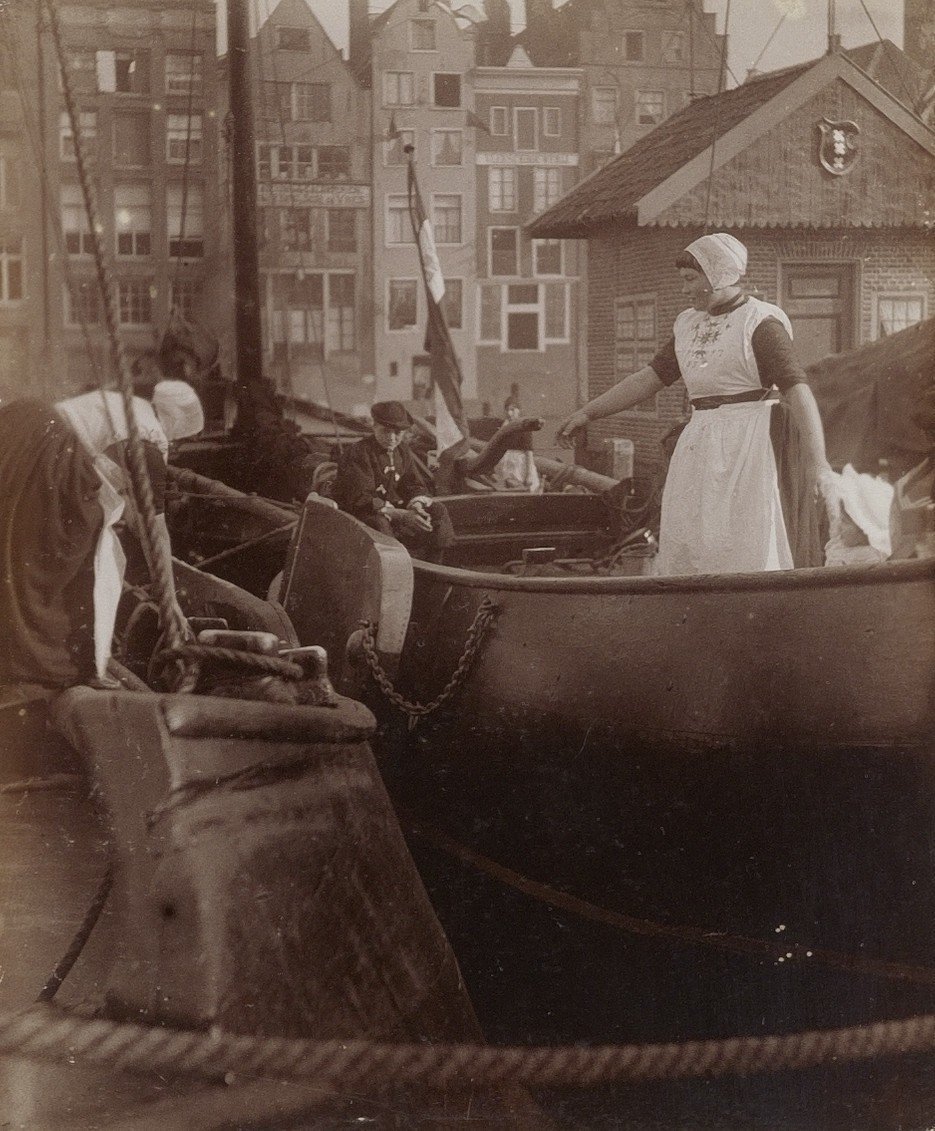
Urk maids on Urker botters in Amsterdam in 1898 (Amsterdam City Archives)
There is another advantage: former maid Grietje Post lives in Amsterdam. She has quite a network, helps girls find work and comforts them when times get tough. Grietje also helps out financially when needed.
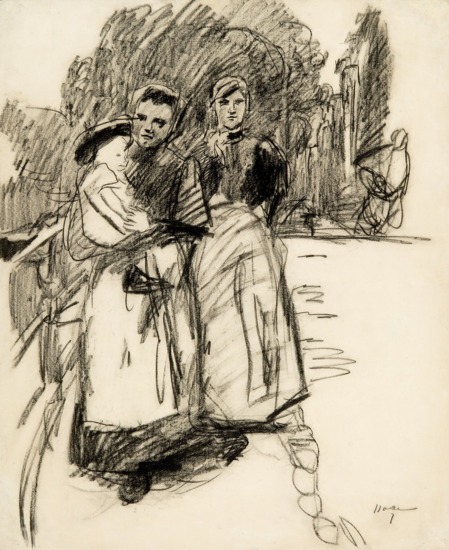
Sketch of Urk maids with Jewish boy wearing a hat by Isaac Israels (private collection)
Rev W.G. Harrenstein also takes care of the girls. He organises catechism classes for Urk maids on Monday evenings, at 9 o’clock. This allows them to complete laundry and other tasks first.
The Urk establishment is less enthusiastic about working in Jewish Amsterdam. “… Our maids of 12 to 16 years are located in the slums of Amsterdam with Jews,” writes De Urker Courant in 1924 with concern. To no avail: Urker girls continue to register at Jewish addresses until just before the war.
Want to know more? Click here.
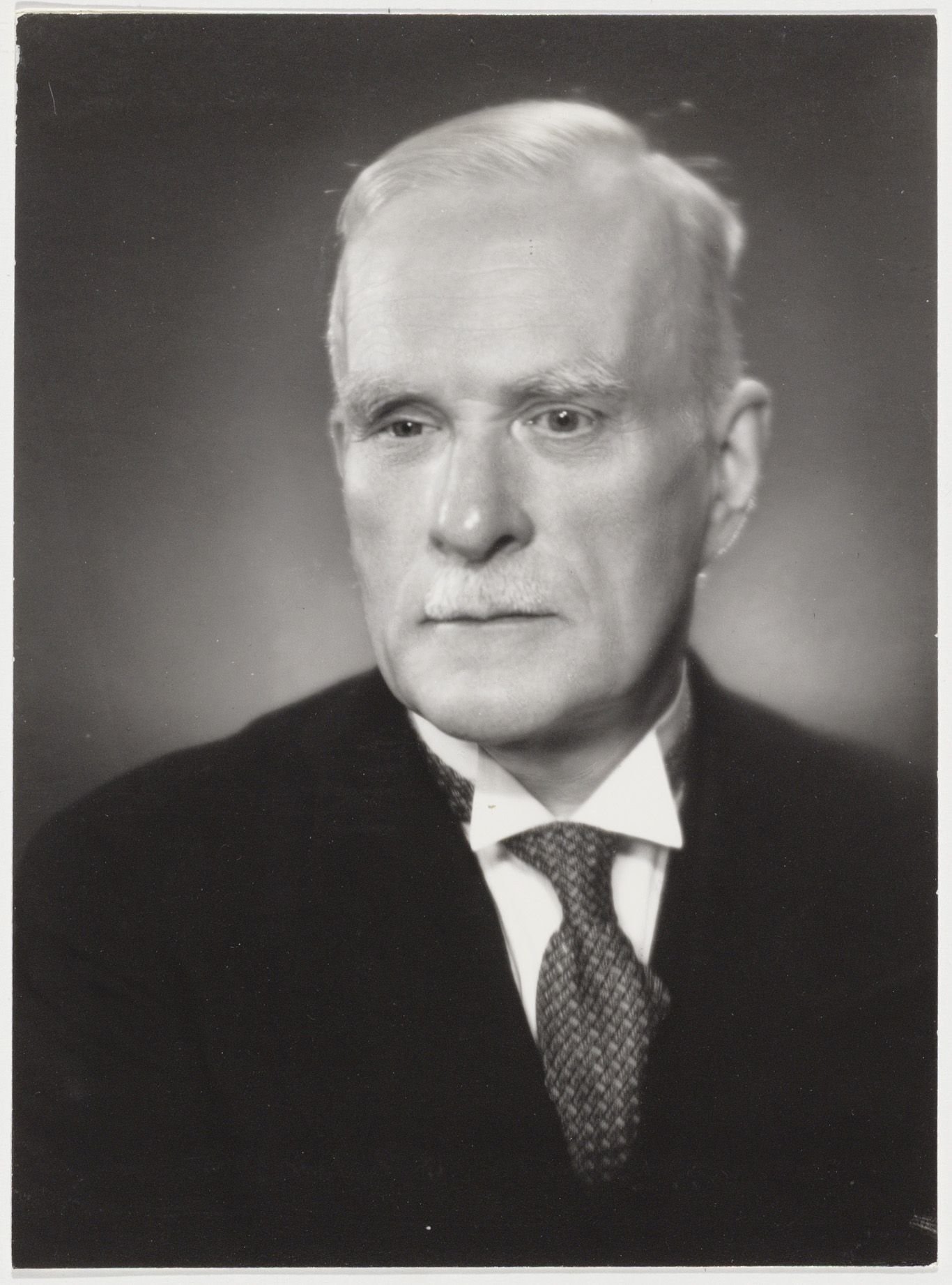
Rev W.G. Harrenstein (Amsterdam City Archives)